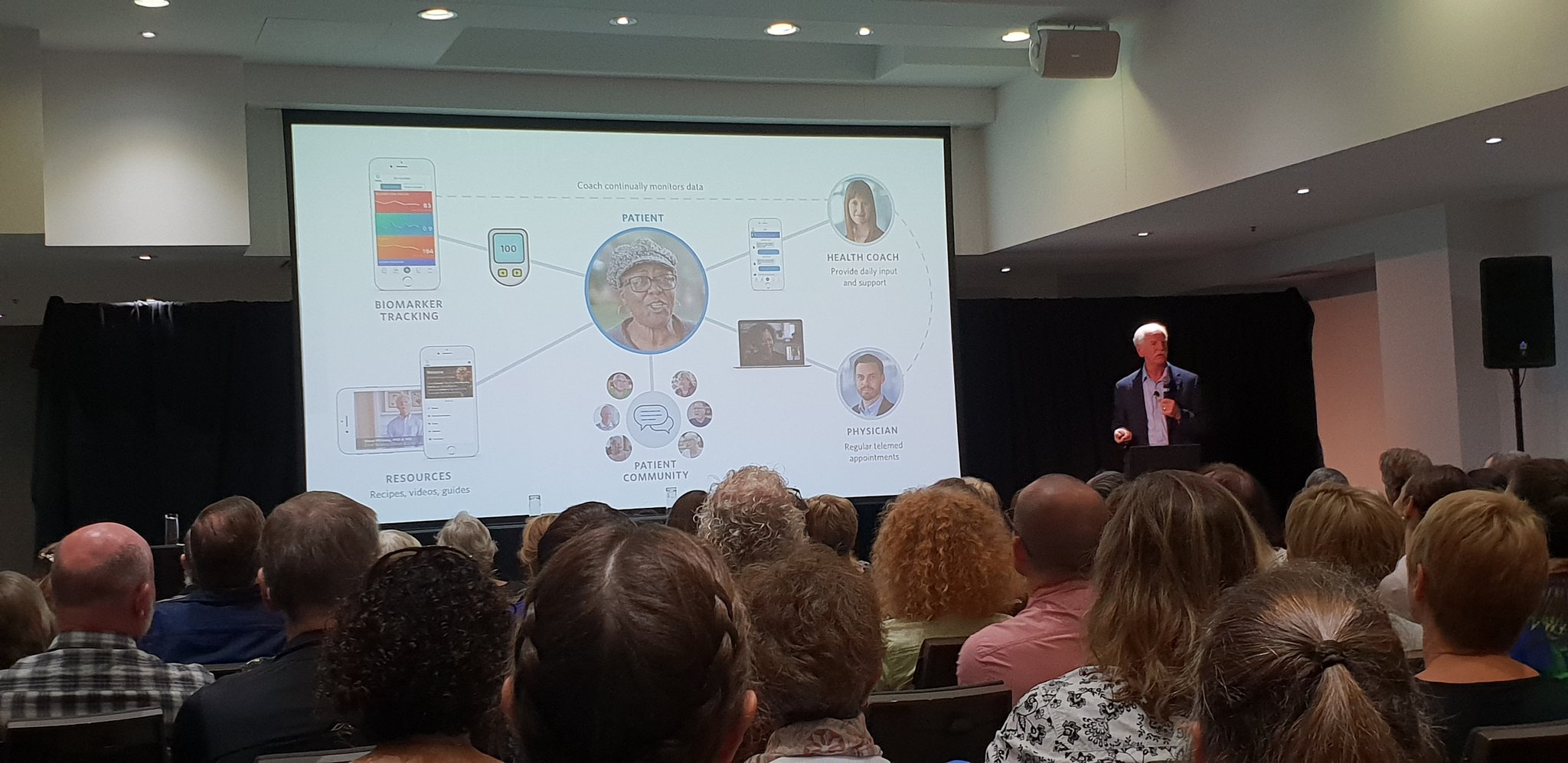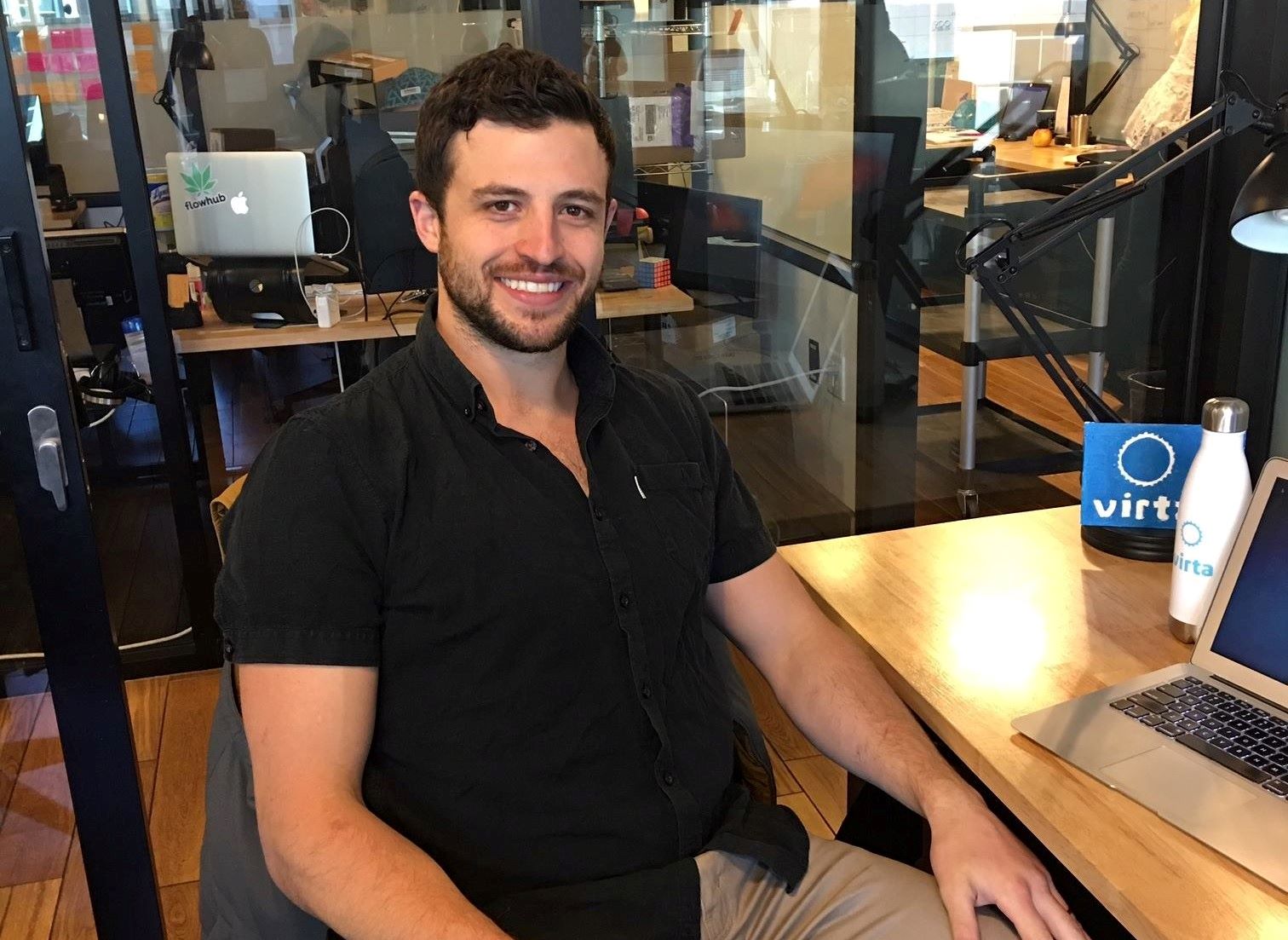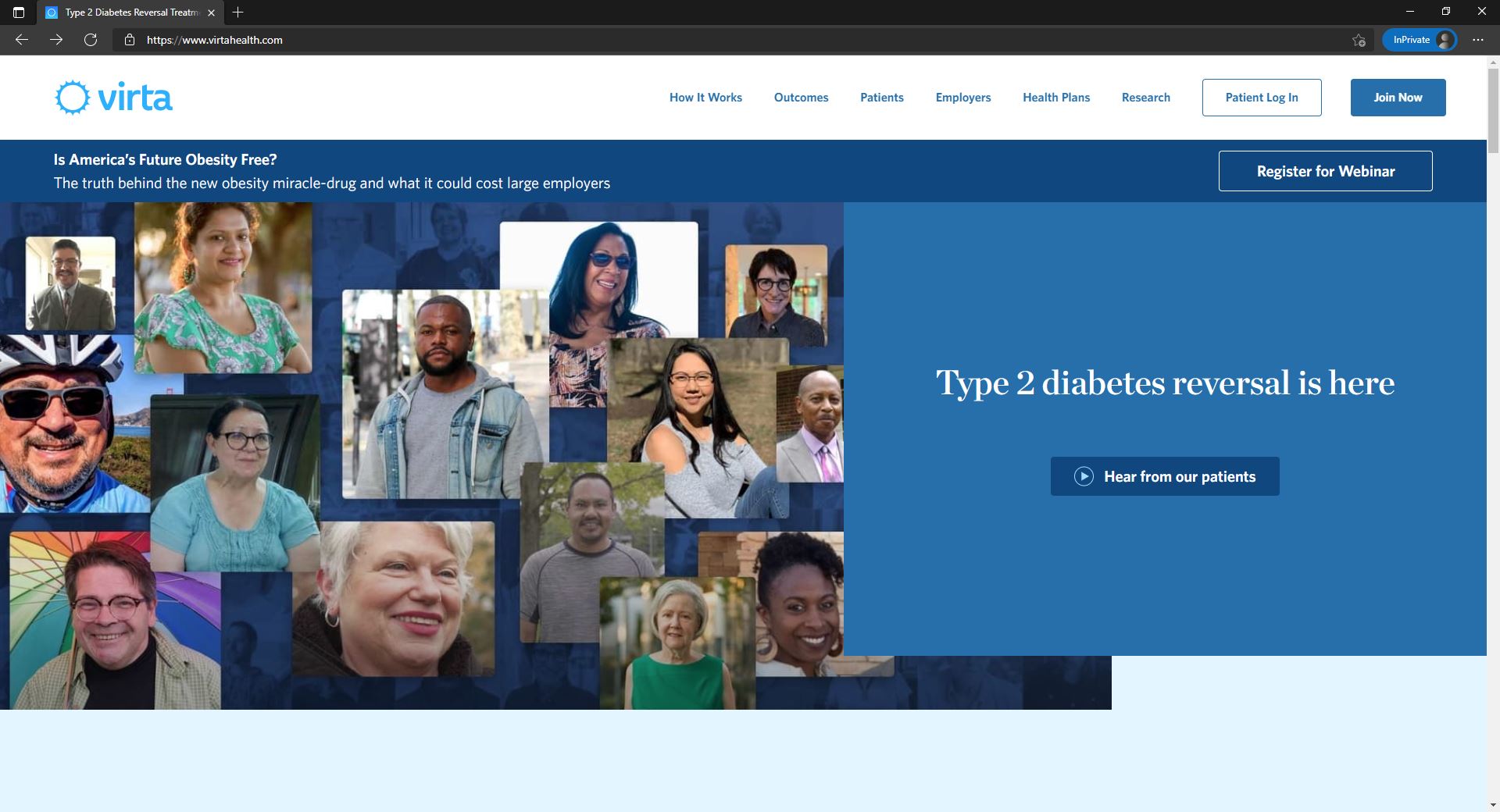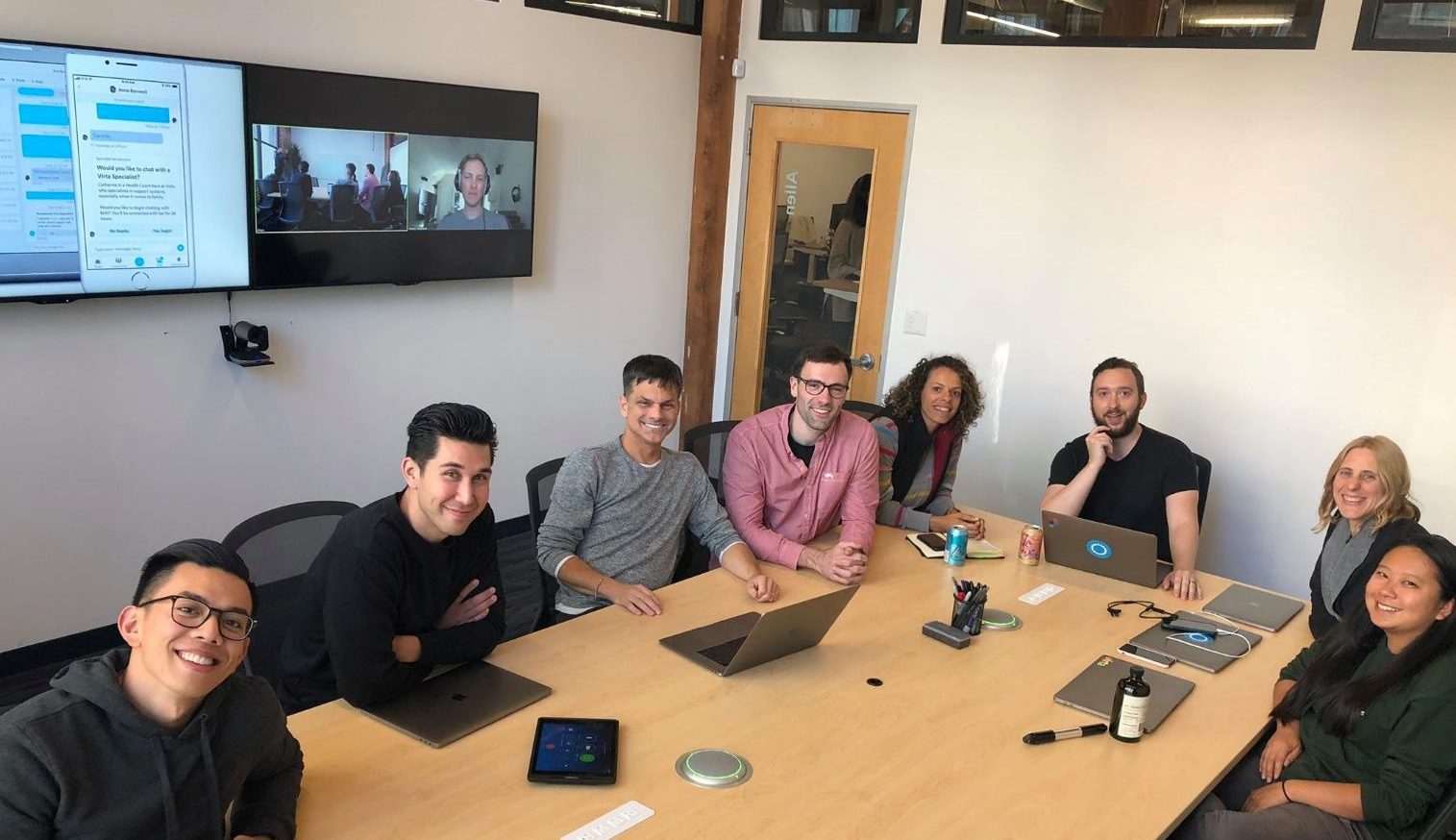How Sami Inkinen and His $2.2 Billion Company Reshapes the Future of Diabetes
Founded in 2014, Virta Health is a company that assists people in reversing type 2 diabetes (T2D) and other chronic illnesses by providing patients with virtual coaching on nutrition and physical behaviors. With conventional approaches, increased drug use and few medical visits are being used to treat illness development. Meanwhile, Virta uses technology, nutrition science, and ongoing remote care from physicians and behavioral specialists to reverse type 2 diabetes. Virta is one of a few companies aiming to combat the epidemic of Type 2 diabetes, which affects more than 30 million people in the United States.
The Founding Story
You may have heard a lot about entrepreneurs, but entrepreneurs plus worldwide athlete plus full-time dad is what makes Sami Inkinen special. A dad of two beautiful girls, a founder of $2B valuation company, and an athletic world-record breaker, Inkinen is nothing but a tireless man that constantly quests for new challenges. The Finish-born entrepreneur was appealed by endurance sports and crazy expeditions as he believes that’s how he gets his mind off professional work and fuel life with body engines.
By the time his former real-estate company, Trulia, was acquired by Zillow for a $3.5 billion deal, he was rowing across the Pacific Ocean with his wife for 41 days and soon to reach Honolulu, Hawaii. With no prior experiences in ocean rowing, two amateur sailors took on a seemingly impossible voyage with a limited preparation time of only 6 months. “I said to myself, I’m not sure I can do this” – Inkinen recalled, as he came so close to giving up. “After one week of rowing practically nowhere, I was in deep place”, he said. His energy was burned out the same as running two marathons per day. “I felt depressed. I was cold and afraid. I thought we could never make it to Hawaii.” Yet with a growth mindset and a resilient spirit, just three days later, Inkinen and his wife reached Oahu, Hawaii and demolished the world record as the fastest couple rowing transpacific.
Prior to his rowing trip, he already set his name on the map of professional athletes. Many times, he came in as a novice but always came out as an expert, whether running, biking or swimming. Inkinen entered the 2004 Wildflower Triathlon (swim-bike-run race) when he barely owned a bike and could swim 20 yards before exhaustion. He relied on images and instructions to excel at swimming in four months while testing the real triathlon only once at a reservoir near Stanford’s campus. From racing in Costa Rica, skiing through the Arctic Circle or smashing triathlons worldwide, Inkinen seeks excellence through these physical as he always aims at better, more efficient strides.

Not once did it occur to him that he might have the chance of getting diabetes. How could the man with 8% body fat and exercised in Olympic standards trapped in the disease of obese, sluggish people? The reality hit him hard when Inkinen found out he was pre-diabetic and on progression to type 2 diabetes in 2012. “I didn’t understand how it was possible”, Sami said. His initial belief of diabetes is only possible in uneducated, lazy people with no willpower. None of these descriptions fitted him. He defied challenges, broke limits and bore nothing but grit and self-control.
As frustrated with the common motto of “eat less, exercise more”, he dived into research and found out the cause lies in his high carb, low-fat diet. He completed all the checklists to be the healthiest man possible yet missed only one factor – sugar – which was abundant in the American diet. This existing circumstance got on his nerves as Western culture and food companies kept perpetuating the consumption of fast and sugar-loaded food. “All the packaged food is full of shit, which is sugar and processed carbohydrates, and that made me quite angry, Sami admitted.
His constant investigations on diabetes led him to encounter Stephen Phinney and Jeff Volek who worked extensively on nutritional ketosis, a process when the body burns fat instead of sugar by restricting carbohydrate to less than 5% of daily caloric intake. Inkinen then learned that type 2 diabetes can be and has been reversed systematically without extreme methods like barbaric surgery or cruel diets. The reason that no one applied this approach was because it required a system of behavioral changes and constant monitoring from physicians which were unlikely to happen in such a current clinical setting.
Having known the answer to the most serious chronic epidemic in the world, Inkinen simply couldn’t sit still. “I have all the tools at my disposal, there is no way I would sitting at home with this secret”, Sami recalled. With the scientific foundation of Stephen and Jeff, Inkinen took charge of building the technology that enables the reversal of diabetes. The three founded Virta Health in 2014 with an aim of reversing type 2 diabetes in 100 million people by 2025 using its core components: virtual continuous care delivery and nutritional ketosis.
So, what is type 2 diabetes exactly and why Virta treatment is worthwhile?
Type 2 diabetes (T2D) happens when your body resists the effects of insulin and fails at keeping the blood sugar (glucose) at a normal level. Usually, doctors would manage the disease by prescribing medications, along with a proper exercise regimen and healthy diets. Some severe cases have to do bariatric surgery to reduce the size of the stomach. Taking on an unconventional path, Virta desires to de-escalate the treatment by focusing on the root cause of diabetes, instead of band-aid solution of symptom management. Through close remote medical monitor and a shift in dietary plans, Virta is ambitious to take the drugs burden off its clients’ shoulders.
When Technology Meets Sciences: Virta’s Strategies to Renovate the Healthcare Industry

By the end of 2020, Virta officially reached unicorn status with $65M funding in series D, elevating its valuation to $1.1 billion. Just five months later, in April 2021, the company finished its Series E round led by Tiger Global with $133 million added and doubled its valuation at $2.2 billion. “Virta is redefining how diabetes and other chronic diseases should be cared for, delivering significantly better health outcomes and impressive cost savings,” partner of Tiger Global – Scott Shleifer shared.
With a technology-driven, non-pharmaceutical approach, Virta has fundamentally changed how diabetes is cared and confronted the collective belief in the possibility of health improvement. How can a new player at the chronic disease treatment capitalize its resources to make it to the top of healthcare businesses? Let’s read on to find out.
Always Look For the Outcomes
Not just in entrepreneurship, whatever you do, ask yourself, what are the end-results or what values can you add to alter the status quo. For Sami Inkinen, Virta is no half-hearted effort designed for testing or experiments. It carries a mission of fixing a broken healthcare system that costs billions of dollars per year with no significant results. “Really, the reason Virta exists is the outcomes. How we get there is sort of secondary” – he emphasized.
On this note, Virta treatment is working. The method of T2D reversal brings in quick, noticeable outcomes. Its clinical study shows 94% of patients gets rid of insulin usage after one year and after two years, more than half of the company’s patients lowered their Hb1Ac, an index to measure blood sugar level, below the T2D benchmark.
Aside from the scientific lens, Virta actually makes its treatment’s outcome visible for patients. Instead of suffering from medication and harsh diets for four or five years to feel better, patients of Virta see positive results rapidly and sustainably. Whether reducing drugs usage or improved sleep quality, the benefits come within days, weeks, or months and sustain in the long run. This evidence-based, scalable solution is bringing tangible benefits and effectively addresses the T2D conundrum.

The result-oriented mindset is further underscored by Virta’s payment model that puts 100% of its fee on the client’s performance. The company believes that patients should only pay if the outcomes satisfy their needs. Virta estimates to save up to $9,600 medical costs in the first two years per patient.
With the money saved and the health improved, Virta delivers its outcome loud and clear. For a business starter, the one pivotal question is how to solve your customers’ problems most efficiently. Looking specifically at the healthcare industry, Sami points out that many companies dig up too much in the features but fall short of outcomes. “They are selling shiny objects. Step trackers and so forth deliver zero outcomes. It’s a complete waste of money and it’s a distraction.” – he elaborated.
What patients or customers, in general, care about are results. Your business growth is aligned with your customers’ benefits. There are millions of “how” to solve a problem, but what sets you and your company apart is the efficiency of the solution. In this way, Virta tops the diabetes industry thanks to its outcome-based, cost-effective approach. The CEO of the company shared “Our patients don’t come to us and say, ‘how many times do you send me a reminder text message,’ or ‘what does the user interface look like?’ They come and say, ‘how quickly can I reverse type 2 diabetes and how will I feel? How much money will it save me?’ I would want the healthcare and healthcare technology conversation to be much more about outcomes and real results. Everything else is just vanity.”
Say No to One-Size Fits All Approach
The more customers you have, the more needs you have to take care of. A business model succeeds when it caters to a diverse portfolio of clients. That’s how Virta builds its core value from the first day. Its nutrition-based treatment aims at tackling every patient’s requirement, with a highly individualized carbohydrate restriction plan. The company understands that they can’t retain their customers by making them eat steamed spinach to lose weight or telling a vegan client to eat eggs and bacons for breakfast. Everything has to be individualized.
So, in what way can Virta diversify its treatment protocol?
Personal data. Patients who sign up for Virta will receive a starter kit that guides them to measure glucose levels, blood pressure, weight or daily activities and be asked to keep these data regularly updated. The company rely on this information to come up with a personalized dietary plan irrespective of patients’ backgrounds, ethnicity or preferences. Virta can also adjust the dosage of diabetic medicine or recommend the next steps based on each client’s performance.
There is no way to replicate one solution to every problem. Flexibility is essential to every business owner, whether with their customers, products, or management. Not only working directly with diabetes patients, but Virta also works with employers, health plans or the government to provide medical services for their employees. “It’s the whole different customers” – Sami explained. “And it’s very important to take time to fully understand the needs and obstacles that the employer might have and how they think about their employees or associates.” When you have more than one group of clients, strive to consider each group’s demand and offer them the most optimal, individually tailored way out. Just like Virta, it is critical to make sure every client is taken care of. “You can’t be successful in curing someone’s health if you have one-size-fits all approach.” – Sami stated.
Outsmart with Technology

AI application is ubiquitous. Yet, how can Virta apply technology the right way, at the right time to make it an industry-leading telehealth unicorn?
Using the model of patient-doctor communication as the core, the company leverages AI software to provide virtual treatment and health monitor to patients via smartphone. Telemedicine has been in the industry for years, but no one addresses the right problem. Sami believes that the key to diabetes-free is not changes in behaviors but a fix in humans biology through which the behaviors will adapt. That explains the endless efforts in managing diabetes go to waste while the problems remain unchanged. The question is how technology surpasses the traditional clinical setting in dealing with diabetes?
Virta finds a pain point. People living with chronic illnesses make critical health decisions minute-by-minute. Their conditions depend on the food they eat, drugs they take or symptoms management which require a close, constant monitor. The prevailing healthcare model, however, fails to provide such services as patients can only visit a care provider once every three to six months. In the meantime, Virta writes off the treatment by leveraging AI to develop its continuous remote care which allows patients to interface with doctors three to four times per day. Inbound data will be analyzed by AI software then transported to medical experts so that they can make timely lifestyle interventions for the patients. The company also creates algorithms that predict the patients’ issues or likelihood of dropping out. By finding the long-agonized predicament and fixing it with the right technology, Virta has made its treatment protocol possible and builds a long-term success.

The company is also one step ahead of the future. Covid-19 has taken telemedicine to an unwound position where virtual medical delivery isn’t just simply a matter of choice. To Sami Inkinen, it’s a good thing. Transitioning from in-person to virtual clinical visits is not only for the safety during the pandemic but also much more convenient and provides better experiences to patients, especially when people in the US healthcare system are severely underserved. Nevertheless, virtual care would still be useless to chronic diseases if such care was still episodic. “Reverse couldn’t have been possible with episodic care” – Sami admitted. As a result, Virta has successfully incorporated technological support to serve the needs of diabetes patients: continuous remote care.
The right identification of what customers need combines with an efficient AI-backed method is crucial to not just telehealth companies but for almost every company in the healthcare market. “The gap between traditional healthcare and telehealthcare is blurring. The use of technology will deliver care that tailor for certain conditions and enables us to reach new outcomes.” – Inkinen said at the Beyond Telemedicine 2020 conference. The future of telemedicine should drive towards outcome-based, value-based, and fee-for-services models. So far, Virta models have achieved all three.
Achieve the Impossible Like Sami Inkinen
The success of Virta is undoubtedly attributed to the help of its CEO – Sami Inkinen. One may doubt that a man can achieve such excellence in both physique and intellectual success. Yet, this man doesn’t show off much and what we know from his accomplishments are just old but gold things that anyone should possess to thrive. Let’s uncover a few key advice from this man.
#1: Get Uncomfortable
No one likes pain. But the truth is, you should. For Sami, being uncomfortable is not only important but also essential to his successful entrepreneurial career. When kicked off Trulia, his real-estate company, he was in an extremely uncomfortable position. Aside from being in the dilemma of not having a visa to work in the US, Sami carried a $100K financial debt from Stanford University where he pursued his MBA. On top of that, his vision of a new real-estate breakthrough was receiving around 30-40 rejections from the investors with the same feedback of “this doesn’t make any sense”. Setting the hardships aside, Sami realized that what he was experiencing match the exact pattern with many companies that later became successful. “You are operating in a non-sense world. Most people think you are crazy. You just simply can’t be walking and following someone’s existing steps. If you are, you won’t be majorly successful.”
This uncomfortable phase is critical, even if your company starts following the right track. Inkinen believes that every 18 month or so, you have to put all the eggs in one basket and bet your company on one thing to become a category-leading business. If you remain in the comfortable path, no matter how good your business is, someone will catch up, eventually.
#2: Keep a Growth Mindset
The Finnish CEO doesn’t wake up one night and suddenly becomes a triathlon athlete or owns a billion-worth company. Everything he has obtained is the results of constant learning and growing. “In sports, whether I win or come in second, third, or fourth, I always try to find two or three things I can improve and figure out a plan on how to accomplish them. It’s the same on the business side: Whatever we achieve, whether it’s profitability or page views on the website–we now have 27 million visits a month and are growing 80-100% every year–we always step back and say, what can we improve?” – Sami explained. This attitude is well manifested at Virta where he always strives for better results for his patients. The company constantly works on its R&D to assess its products as well as upgrades the technology for more efficient medical treatment. One thing that always concerns Inkinen at Virta is how his team can improve the patients’ clinical experiences. “There is no such thing as “done” when you apply the growth mindset. Growth is about reinventing and improving the status quo continuously” – he shared.

#3 Solve the Pain Point
There are many problems but solving the most persistent and recurring one is what makes your business work. Thousands of people are dying because of diabetes every single day. Meanwhile, the total cost of diabetic treatment in America is $404 billion per year. Efforts are invested in curing the disease, yet patients are still suffering. That’s the pain point in the diabetes industry. By identifying the exact problem and fixing it, Virta leads its way to top the industry and redefine the entire healthcare system.
This same goes for any business which is struggling. “Get out there and try to understand your customers’ concerns” was Inkinen’s advice. Once you acknowledge and come up with a solution to your customers’ problems, your problems naturally fade away. This is what happened to Sami when his previous company hit bottom due to the global crisis. He decided to leave his comfortable office and spent time with his customers to understand their needs. “When fixing your customer’s problems with a solution ten times better than others, your own problems disappear” – said Inkinen.
The Bottom Line
What makes Virta a success just boils down to one thing. A business that brings real values to its customers. The company prides itself to be the first and only solution to reverse type 2 diabetes and get patients off diabetic drugs. The story of Virta Health represents a future of healthcare automation which entrepreneurs like Sami Inkinen strives for a win-win-win prospect of reducing medical costs and at the same time, uplifting the healthcare quality and availability.









